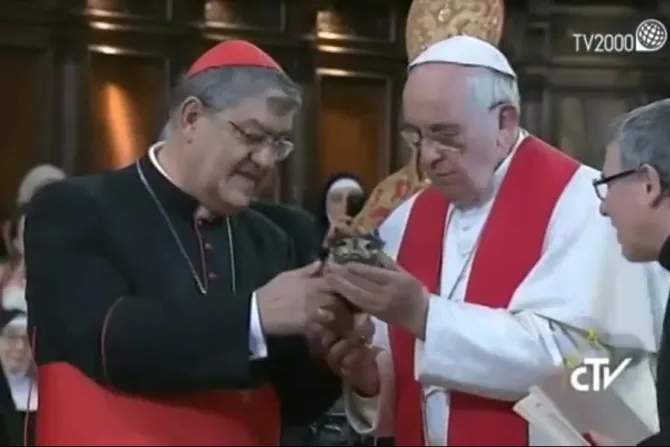Naples, Italy, Dec 19, 2016 / 12:06 pm
Prayer was the response to a rare failure of a saint's blood to liquefy in Naples, an occurrence some believe to portend misfortune.
"We must not think of disasters and calamities. We are men of faith and we must pray," said Monsignor Vincenzo De Gregorio, the Abbot of the Chapel of the Treasure of San Gennaro, ANSA reports.
The blood belongs to St. Januarius, Patron of Naples and former bishop and martyr of the city.
Known in Italian as San Gennaro, his bones and a reliquary of his blood are preserved in Naples' cathedral. He is believed to have been martyred during the infamous persecution of Christians during the rule of the Roman emperor Diocletian, who retired in 305.
The reputed miracle is locally known and accepted, though has not been the subject of official Church recognition. The liquefaction is believed to happen at least three times a year: the Saturday before the first Sunday of May, Sept. 19, which is the saint's feast day, and Dec. 16, the anniversary of the 1631 eruption of the Mount Vesuvius volcano.
During the miracle, the dried, red-colored mass confined to one side of the reliquary becomes blood that covers the entire glass. In local lore, the failure of the blood to liquefy signals war, famine, disease or other disaster.
The blood did indeed liquefy on Sept. 19, 2016.
Historically, the vial has sometimes changed upon the visit of a Pope.
On March 21, 2015, Pope Francis met with priests, religious and seminarians at the cathedral and gave a blessing with the relic.
Cardinal Crescenzio Sepe of Naples then received the vial back from the Pope and noted that the blood was still solid on one side of the vial.
The cardinal remarked: "It seems that St. Januarius loves the Pope, because the blood is already half liquefied."
Pope Francis quipped in response: "you can see that the saint only loves us a little. We have to convert more."
The last time blood liquefied in the presence of a Pope was in 1848 when Pius IX visited. The phenomenon didn't happen when St. John Paul II visited the city in October 1979, or when Benedict XVI visited in October 2007.


